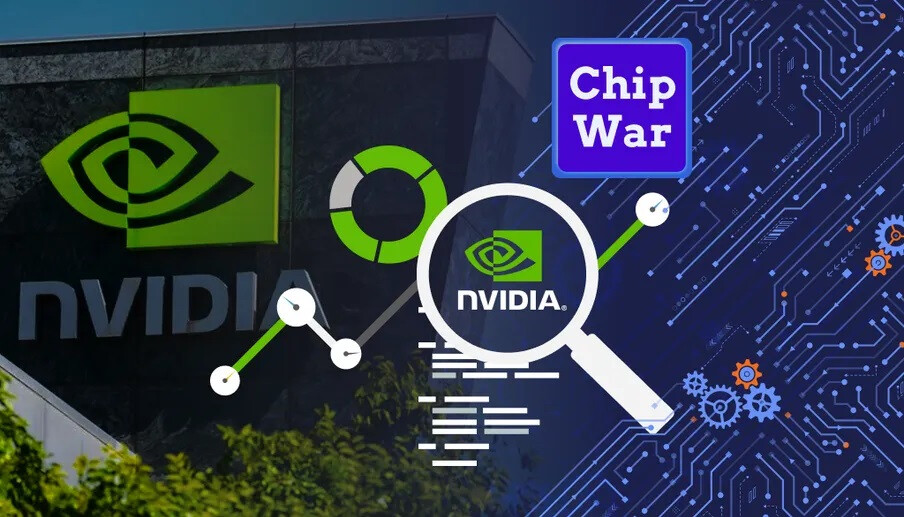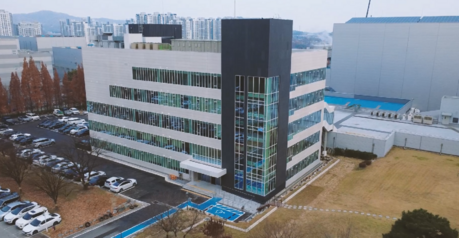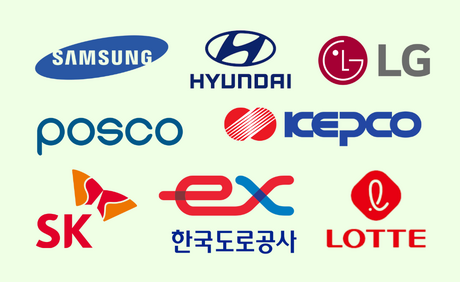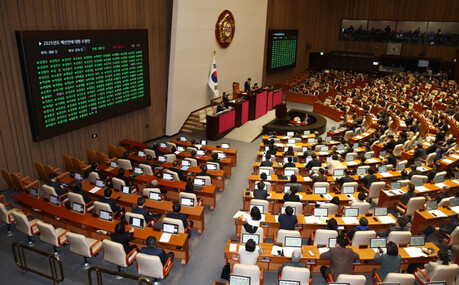
"The U.S. based its policy on the assumption that China cannot make AI chips. That assumption was always questionable, and now it is clearly wrong." These stark words from Jensen Huang, CEO of NVIDIA, the global leader in artificial intelligence (AI) semiconductors, encapsulate the intricate dance between technological prowess, economic ambition, and geopolitical rivalry playing out in the global AI landscape. Delivered during an earnings call on May 28, Huang’s critique of the U.S.’s increasingly stringent semiconductor export restrictions on China underscored a core dilemma facing his company: how to navigate Washington’s containment strategy while preserving access to a market deemed indispensable for NVIDIA’s long-term growth and, arguably, for the future of global AI development.
For years, Huang has consistently voiced concerns that export regulations, rather than stifling China’s technological ascent, could inadvertently accelerate its journey towards self-reliance. This prediction appears to be gaining traction as Chinese domestic players, most notably Huawei, make significant strides in AI chip development. The intensifying U.S.-China trade conflict has placed NVIDIA squarely in the crosshairs, forcing it to adapt its product offerings and strategic approach to maintain its foothold in what Huang describes as a "tremendous opportunity too good to miss."
The Escalating Export Control Regime
The saga began in August 2022 when the Biden administration imposed new license requirements, effectively restricting NVIDIA from exporting its most powerful AI chips, the A100 and H100, to China. These initial measures, aimed at limiting China's access to advanced AI capabilities for national security reasons, were followed by successive tightenings in October 2023 and December 2024, consistently raising the bar for what could be legally shipped to the Chinese market.
In response, NVIDIA engineered and introduced the H20 chip, a downgraded version of its high-performance H100, specifically designed to comply with these evolving U.S. export constraints. The H20 quickly became the sole high-end AI chip NVIDIA could legally sell in China, a critical lifeline for its significant revenue stream from the region. However, the regulatory environment took a dramatic turn in early 2025 when the Trump administration, building on the Biden administration’s efforts, moved to restrict H20 exports as well. This meant that the H20 effectively now requires an export license for each sale, a bureaucratic hurdle that significantly impedes its commercial viability and effectively blocks the chip from the Chinese market. Furthermore, in March 2025, the Trump administration imposed additional chip export restrictions, blacklisting dozens of Chinese entities from trade in semiconductors and other advanced strategic technologies.
This tightening noose has had tangible financial repercussions for NVIDIA. The company reported a substantial cost burden of $4.5 billion in the quarter spanning February to April of this year, directly attributed to excess H20 inventory that could no longer be sold in the Chinese market. NVIDIA estimates that without these restrictions, it could have generated an additional $2.5 billion in revenue during that period. Looking ahead, the company projects an even more significant $8 billion revenue loss from H20 sales in the next quarter, signaling the profound impact of these controls on its bottom line. Reports indicate NVIDIA also expects around $5.5 billion in charges stemming from H20 inventory and prior sales now subject to the new restrictions.
NVIDIA's Resilient Strategy: Adapt, Innovate, and Engage
Despite these formidable headwinds, NVIDIA’s overall financial performance remains robust. Its total revenue in the last quarter surged by an impressive 69.2% compared to the same period last year. This remarkable growth is largely driven by explosive global demand for its AI chips in other markets, particularly its latest Blackwell series, which has seen very high demand and is effectively offsetting the losses incurred in China. The Wall Street Journal noted that while China-related revenue losses are not a significant short-term blow given the global demand, the long-term growth expectations of investors hinge on NVIDIA's continued access to the Chinese market.
Recognizing the indispensable nature of the Chinese market, NVIDIA is aggressively pursuing a multi-pronged strategy to maintain its presence. The company is reportedly developing new China-specific AI chips, such as the rumored B30, designed from the ground up to comply with U.S. export regulations while still offering substantial performance. Plans are in motion to produce over 1 million units of this new chip this year. Additionally, a modified version of the H20, tentatively named L20, with further reduced memory and compute capabilities, is expected to launch as early as July 2025, indicating NVIDIA's relentless pursuit of compliance while maintaining market access. Jensen Huang himself has indicated that they will not release another version based on the Hopper architecture (on which H20 is based) as it has reached its modification limit, signaling a move towards entirely new architectures for the Chinese market.
Beyond product innovation, NVIDIA is making a significant strategic move by planning to establish a new research and development (R&D) hub in Shanghai. This R&D center is intended to cement NVIDIA's long-term foothold in the Chinese market, demonstrating a deeper commitment despite the trade barriers. CEO Jensen Huang reportedly met with Shanghai Mayor Gong Zheng in April to discuss the expansion. The R&D center will focus on AI hardware development, ASIC (Application-Specific Integrated Circuit) design, and ensuring compliance with U.S. export controls. Importantly, NVIDIA has stated that sensitive GPU designs will not be transferred to China, emphasizing that the Shanghai team will work on global R&D projects, including chip verification and autonomous driving technologies, within the confines of U.S. regulations. While some U.S. lawmakers have expressed concern that this move could aid China’s AI development, NVIDIA maintains that it is merely leasing new space for existing employees to accommodate growth.
China's Pursuit of AI Chip Self-Sufficiency
NVIDIA's strategic pivots are not occurring in a vacuum. They are a direct response to, and a reflection of, China's accelerated drive towards technological self-sufficiency, particularly in the realm of advanced semiconductors. CEO Huang’s assertion that "half of the world's AI developers are in China" underscores the strategic importance of this market not just for revenue, but for retaining mindshare and leadership in the global AI ecosystem. If U.S. companies are prevented from competing in this crucial market, Huang argues, the U.S. risks losing its leading position in the AI industry altogether.
The vacuum created by U.S. export controls is being rapidly filled by domestic Chinese companies, with Huawei at the forefront. Huawei has significantly ramped up the development and production of its Ascend series AI chips, directly challenging NVIDIA’s dominance. The company’s Ascend 910D chip is reportedly aiming to compete directly with NVIDIA’s H100. While detailed technical specifications for the 910D are not yet publicly available, reports suggest its theoretical peak performance could surpass that of the H100. Huawei has already begun mass shipments of its 910C AI chips and plans for mass production of the 910D later in 2025.
Despite impressive progress, Huawei and its manufacturing partner SMIC still face significant hurdles, particularly in production capacity and yield rates—the percentage of functional chips produced from a wafer. While Huawei has reportedly increased the yield rate of its 910C chips from 20% to 40% in 2025, this remains below the industry standard of approximately 60% for large AI chips. Furthermore, U.S. and Dutch export controls restrict China's access to the most advanced chipmaking equipment, such as extreme ultraviolet (EUV) lithography, limiting their ability to easily expand production capacity and achieve higher yields for cutting-edge nodes. Consequently, while Huawei aims to increase its output to 300,000 Ascend 910B units and 100,000 910C chips annually in 2025, NVIDIA still maintains a dominant position in the Chinese AI chip market, having sold an estimated 1 million H20 chips in 2024. However, the gap is narrowing, and Chinese government policies strongly favor domestic technology in key industries, projecting China’s self-sufficiency in AI chips to reach 82% by 2027, up from an estimated 34% currently.
The Battle for the AI Ecosystem: CUDA vs. Homegrown Alternatives
NVIDIA's concerns extend beyond hardware sales; they encompass the broader AI ecosystem. The company has meticulously built an unrivaled ecosystem around its CUDA software platform, which provides developers with the tools and libraries to utilize NVIDIA’s GPUs for AI development. This robust ecosystem has been a critical factor in NVIDIA’s dominance, making it difficult for competitors to displace its technology even with comparable hardware.
Jensen Huang argues that "ultimately, the platform that secures AI developers wins the AI competition." He fears that U.S. export restrictions, by pushing Chinese AI talent away from American platforms like CUDA, are inadvertently strengthening rival ecosystems. While Huawei’s Ascend chips are making strides in hardware, they currently lack a software ecosystem as mature and comprehensive as CUDA. This could pose challenges for Chinese developers in optimizing workloads and achieving the same level of scalability and efficiency across interconnected networks. However, the emergence of strong domestic hardware platforms is expected to catalyze the development of homegrown software ecosystems optimized for Chinese architectures, potentially leading to a bifurcation of the global AI development landscape. This would mean Chinese AI models could be specifically optimized for Huawei's architecture, creating global demand for Chinese chips despite U.S. restrictions.
Strategic Crossroads
NVIDIA's continuous engagement with the Chinese market, despite the political pressures and economic costs, is a strategic imperative. Last year, 13% of NVIDIA's revenue came from China, representing a significant portion of its overall business. Beyond the immediate financial impact, the Chinese market serves as a crucial strategic stronghold for NVIDIA to maintain its long-term growth trajectory and global leadership in the AI industry.
The company's plans to release new, compliant chips and establish an R&D center in Shanghai demonstrate its unwavering commitment to navigating the complex U.S.-China tech rivalry. This strategy highlights the delicate balance U.S. technology companies must strike between complying with their government’s national security directives and preserving access to vital global markets.
The ongoing advancements by Chinese companies like Huawei underscore the limitations of export controls as a standalone policy. While restricting access to cutting-edge technology might slow down China's progress, it also incentivizes aggressive domestic innovation and the development of alternative supply chains and ecosystems. As the global AI race intensifies, the future of AI leadership may well depend on which nations and companies can attract and retain the most talent, foster the most vibrant development communities, and build the most robust and accessible platforms – a competition where, according to Jensen Huang, isolating half of the world's AI developers could prove to be a "precisely wrong" strategy. NVIDIA’s actions signal a clear intent to remain a key player in this evolving landscape, adapting its products and deepening its engagement to ensure its continued prominence in the burgeoning global AI market.
[Copyright (c) Global Economic Times. All Rights Reserved.]






























